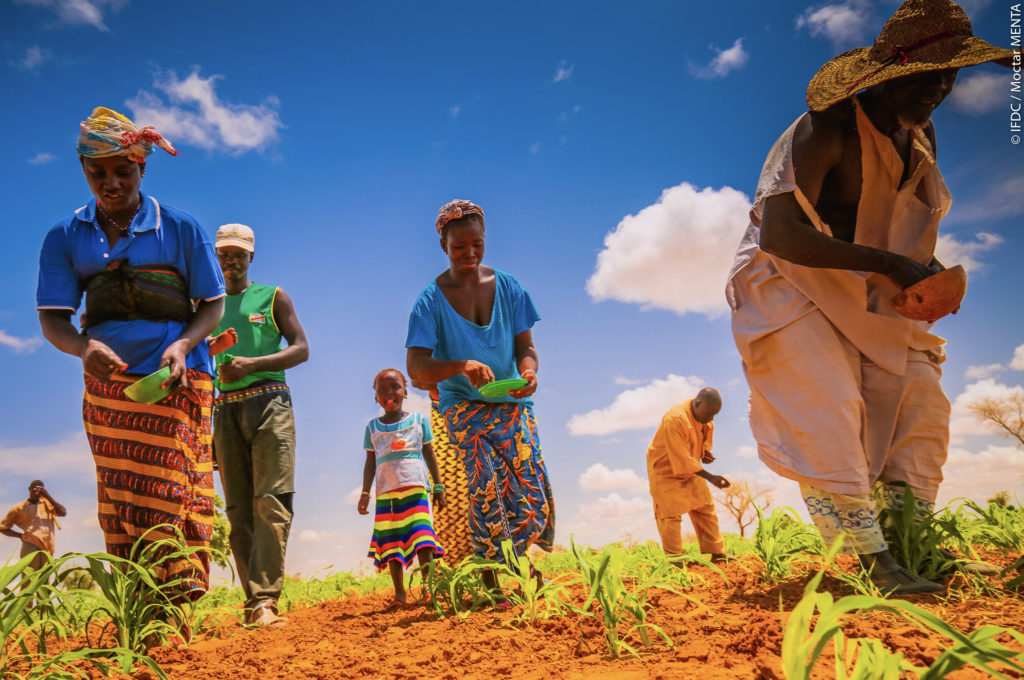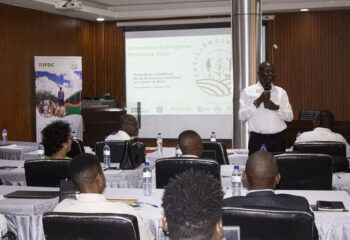
Fertilizers and Climate Change
For more than a century, fertilizers have driven agricultural intensification, feeding more than half the world’s population. Their use slows deforestation, the source of 12% of all greenhouse gases, and prevents the depletion of soils’ nutrient and carbon contents, the cause of low and declining crop yields. Improved fertilizer development and dissemination will be the catalyzing factor in achieving a 60% increase in global food production by 2050, when the world’s population could exceed 10 billion.
Despite these necessary benefits, losses associated with nitrogen-based fertilizers constitute half of agriculture’s contribution to global greenhouse gas emissions. In addition, the effects of nitrogen and phosphorus fertilizer overuse can be seen in the pollution of waterbodies, such as the Chesapeake Bay, the Gulf of Mexico, and the Great Barrier Reef.
IFDC’s fertilizer research and global field programs, realizing these benefits and risks, design, promote, and implement specialized solutions centered around soil and plant health that assist farmers around the world to profitably practice sustainable, nutrition-sensitive, and climate-smart agriculture.
IFDC’S Approaches
Balanced Fertilizers
While average nitrogen use efficiency for cereal production can be as lowas 30% in developing countries, IFDC research demonstrates that improved management practices and balanced plant nutrition, including incorporating small amounts of secondary and micronutrients (SMNs), increases nitrogen uptake and boosts farm yields by as much as 35% across various sub-Saharan soils and crops.
SMN-containing fertilizers also increase plant tolerance to drought, and as part of a balanced fertilizer regime, can boost water use efficiently by 250%. Moreover, in tandem with increased nutrient uptake, SMN-containing fertilizers can improve the nutritional value of crops. For example, IFDC found that some formulations can increase the amount of zinc in grains by as much as 65%.
Urea Deep Placement
In Bangladesh, the most climate-vulnerable nation, farmers intensively cultivate rice on 80% of all land holdings. Widespread nitrogen fertilizer overuse results in major losses, creating environmental stress and placing an economic burden on farmers and the nation’s financial capital.
As a solution, IFDC introduced urea deep placement (UDP) to smallholder Bangladeshi rice farmers, more than 2 million of whom apply the technology on 1 million hectares of rice. UDP reduces urea use by more than 30% while increasing yields by 15%. This improved efficiency results in a 60-80% decrease in nitrous oxide emissions. Farmers experience 24% higher incomes, while the government of Bangladesh saves $30 million per year on fertilizer subsidies.
Integrated Soil Fertility Management
Balanced fertilization and UDP are part of IFDC’s integrated soil fertility management (ISFM) approach, which also includes strategies like crop rotation, legume introduction, and integration of crop-livestock systems.
Where continuous cereal cultivation has mined soil nutrients, such as in sub-Saharan Africa, IFDC promotes ISFM practices to reverse the trend of decreasing yields and soil organic matter. The greater biomass resulting from yield increases are incorporated back into the soil to boost soil health. IFDC-assisted farmers in sub-Saharan Africa using ISFM have more than doubled their productivity and increased incomes by 20-50%. In only a matter of decades, soils benefiting from ISFM can sequester up to 1,000 kilograms of carbon per hectare per year.
Finally, fertilizers are responsible for averting land conversion and deforestation. Fertilizer-related yield intensification on existing agricultural lands preserved 1 billion hectares of land between 1961 and 2005. Judicious application of balanced fertilizers will continue to prevent land conversion.
Click to view and download the brochure.



